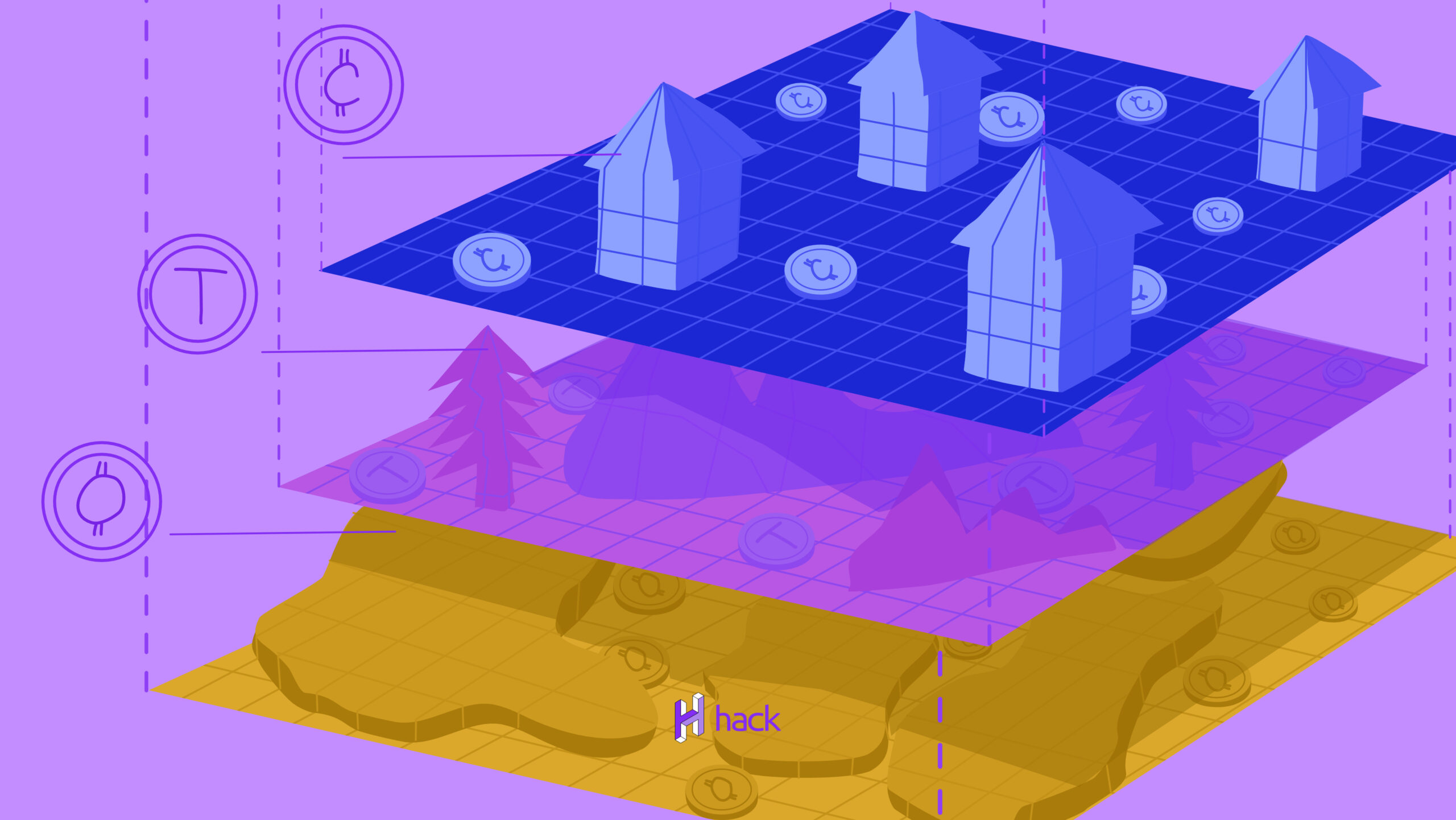The digital age has been introducing profound improvements across various sectors, especially in the case of digital payments and ownership. However, the growth of payment technology has also created noticeable threats to sensitive customer data when passes through various points while making digital payments.
In recent years, blockchain tokenization has been proven as a reliable approach for the isolation of data in the payment processing ecosystem. In addition, the use of blockchain-based tokenization has been making headlines for prospects of converting tangible and intangible assets into digital tokens.
So, what can we tokenize and what does the new age of tokens mean for the future of blockchain and the world?
Let us discuss the definition of tokenization in detail along with the value and opportunities it brings:
What does Tokenization mean?
Tokenization is the process of transforming the ownership rights of an asset into a digital token.
Blockchain tokens are the digital representation of complete or shared ownership of anything of value. Blockchain tokens are commonly leveraged in payments and settlements between participants. The tokens also enable the representation of multi-party ownership of an indivisible asset, such as a work of art, and ease the exchange of such ownership between parties in a blockchain network.
It is recorded that blockchain-based tokenization can open new prospects for optimization and the introduction of new business models as well as new business processes, which include multiple partners. According to the IDC, the global tokenized asset market would reach a valuation of $500 billion by 2025.
Although we can notice promising opportunities for tokenizing assets on the blockchain, the concept of tokens didn’t start here.
The earliest usage of tokens dates back to the British Empire between the 17th to 19th centuries. This time was when fiat currency was inaccessible, and tokens acted as alternatives to coins. People also used these tokens to purchase specified items. The early application of tokens formed the basis of the currency as a valid instrument for exchanging goods and services.
Several years later the idea of tokenization shifted to the online commerce industry. Tokenization is an essential tool in today’s security protocols. Here, tokenization safeguards a user’s card information and payments. Asset tokenization development enabled online merchants and payment service providers to transfer card data in an encrypted format.
Types of Assets we can tokenize
As you must have already deciphered from the definition of tokenization, it involves transforming assets into tokens. However, we can find many types of assets in the world which are difficult to divide and transfer. Therefore, we need to have a better understanding of the different types of assets that we can convert to tokens.
Intangibles
The intangible assets exist only according to legal precedents without any physical object for representation. Examples of intangible assets include copyrights, patents and intellectual property (creations of the mind, inventions; literary and artistic works; designs; symbols, and names). When tokenizing intangible assets, it is important to ensure that the asset transfer model of the blockchain network is the same as the real-world transfer model. Intangible assets are easy candidates for conversion to tokens without any storage or shipping concerns. On the contrary, jurisdictional differences could create profound difficulties for transferring tokens representing intangible assets.
Fungible Assets
Fungible assets are the ones that are interchangeable. The most common examples of fungible assets include wheat or gold. Converting fungible assets into tokens is easier as you can divide them into smaller units easily. Furthermore, one token could serve as a representative for a group of fungible assets such as a pile of gold. The tokenization algorithm for fungible assets must also include an abstraction layer. In addition, a set of tokens is related to a collection of interchangeable asset components.
Non-fungible Assets
Non-fungible assets are the ones that cannot be broken into smaller pieces in real-life. Tokenization helps in breaking down non-fungible assets into digital shares, which you can trade either fully or in limits. The tokenization example for artwork and real estate shows the possibilities of converting non-fungible assets into tokens in a successful way.
The conversion of a piece of art into tokens starts with the introduction of an immutable digital signature or a token. The digital signature provides representation for the artwork while retaining uniqueness. Subsequently, you can break down the token into smaller sub-tokens which you can sign digitally. Then, it is possible to sell the tokens like shares of the original artwork.
Benefits of Asset Tokenization
What they can bring to the digital world?
Now, it is time to look at the various advantages that asset tokenization provides. These benefits highlight the reasons for which users and enterprises would go for it and the purpose of tokenization in the first place:
Transparency
Blockchain offers the benefit of transparency by default, and all transactions on a blockchain network are accessible to all network participants.
In the case of physical assets, the value of transparency allows better traceability while improving trust over origins and ownership of the asset. Therefore, tokenization can serve exceptional benefits in easier identification of ownership of a specific asset and the related chain of ownership.
Fractional ownership
Another beneficial use case for tokenization has a practical aspect. Here, tokenization enables the division of tokens into smaller sections. This process is where a user can purchase a token and gain fractional ownership of the represented asset. This way, the seller does not have to divide the asset physically, and more users can participate.
Tokenization could change the conventional norms of asset ownership and encourage the potential of fractional ownership. Additionally, fractional ownership makes it possible for typically illiquid markets to access a wider audience.
Single Source of Truth
Organizations collect a considerable amount of data for every asset. However, mapping and interlinking data like intellectual property rights, licenses, product ownership and rights to specific products are difficult.
With the help of a tokenization algorithm, blockchain brings in a single layer of trust. The layer of trust can enable business partners or competitors to share their data collectively. As a result, multiple participants in an ecosystem could find convenient interaction with a singular digital representation of a concerned asset. Subsequently, it can improve efficiency throughout the value chain alongside introducing new approaches for collaboration.
From exotic assets like artwork, sports teams and racehorses to traditional assets like bonds, real estate, venture capital funds and commodities, almost every asset class can be tokenized.
What can be tokenized?
Real Estate
Real Estate tokenization allows fractional ownership, which opens the doors for high capital and increased market participation. Tokenized real estate assets provide an opportunity to expand real estate investment markets.
Commodities
Tokenization of commodities can offer new market opportunities across the sourcing of commodities and trading lifecycle. Converting physical assets into tradable digital assets offers improved liquidity and lesser barriers to entry in asset classes led by institutional investors individuals.
Private equity shares
Currently, information about shareholders and shares of small-to-medium size companies is recorded on paper or spreadsheets. Each party manages records in its database, creating siloes which is inefficient and prone to errors. Tokenization of equity shares allows companies to interact with shareholders by providing information on a single shared and immutable ledger. Shareholders will have ownership transparency and authenticity to run trades on the secondary market.
Physical Goods
Illiquid assets, including artwork, wine, ownership interests in private companies, partnership shares and more, can be tokenized to offer provenance, lending and price discovery through the blockchain’s transparency.
Intellectual Property
Intellectual property (IP) refers to creations of the mind, such as inventions; literary and artistic works; designs; symbols, names and images used in commerce.
Final Thoughts
To the question “Can we tokenize everything?” the answer is simple:
Everything that can be tokenized, will be tokenized!
We can expect that the emergence of asset tokenization will bring new actors, new services and new roles to the market. It will present unique opportunities to the traditional players to meet the new demands of the token economy.



